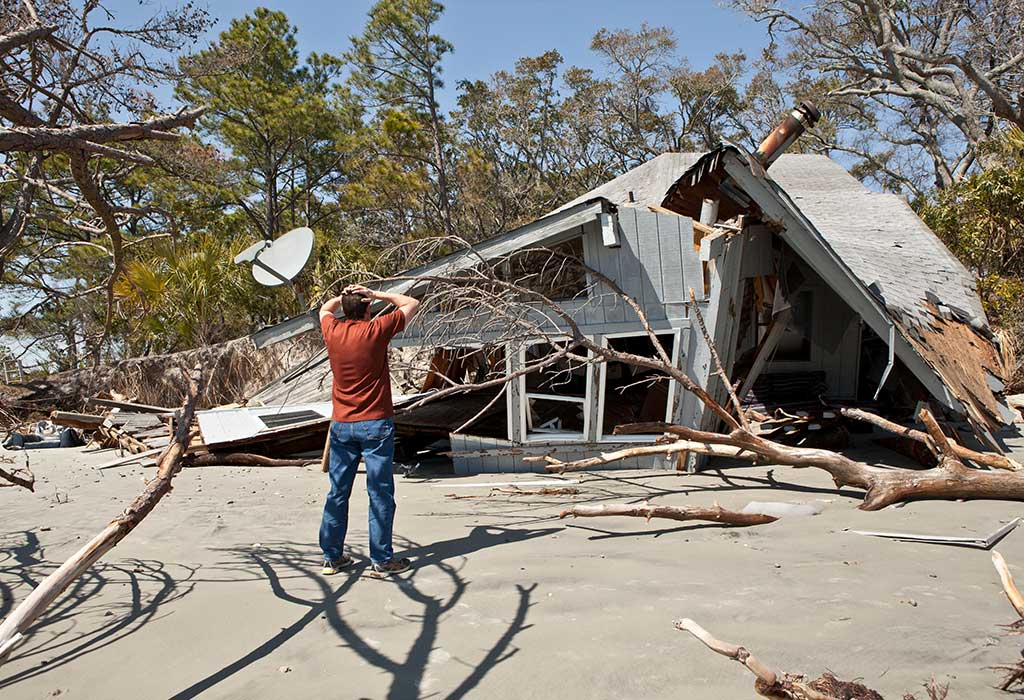
IESE Insight
Why we need local banks to tackle climate disasters
Local banks are more likely than big banks to lend credit to businesses trying to rebuild after a climate-related event, strengthening the economy overall.
Climate change is increasing the frequency and intensity of natural disasters, leaving affected communities with the challenge of picking up the pieces in the aftermath. On top of the tragedy of death and injuries, there’s the economic toll of reconstruction — for businesses and individuals alike. Businesses are often forced to seek out loans in order to prevent foreclosure, a scenario that could send ripple effects across the local economy with the loss of jobs and a decrease in spending.
According to my research with the participation of my colleague Xavier Vives, local banks — not big banks — are most likely to rise to the occasion. The reason is fairly straightforward: Local banks have the skills necessary to assess businesses based on their history and potential, relying on personal relationships and local knowledge (called “soft” information). Larger, more diversified banks make their lending decisions primarily on hard financial data and collateral assessments — and are therefore more likely to withdraw financial support after a disaster.
My co-authors and I looked at every business loan listed by the Bank of Spain between 2004 and 2017, focusing on lending behaviors before and after wildfires. We analyzed loan records from both local and outsider banks, assessing how credit availability changed for businesses in affected areas. The study used financial data from nearly 770,000 firms per year, combined with detailed wildfire records. By leveraging this large dataset, we were able to isolate the effects of climate disasters on lending practices and economic outcomes.
Local vs. outsider banks
The economic recovery of areas hit by climate disaster depends significantly on access to credit. This allows businesses to rebuild, to continue operations and to retain employees. When businesses shut down due to a lack of credit, local economies suffer long-term consequences, including population decline, reduced tax revenues and lower overall economic productivity.
In our research, we found that local banks continued lending to businesses in disaster-struck areas, helping them recover and maintain employment. Outsider banks, however, reduced credit supply, particularly to businesses with limited financial transparency.
This is because large banks operate with a one-size-fits-all risk assessment model, making them cautious about lending in areas with recent climate disasters. Their models often fail to capture the nuances of a local economy’s ability to recover, leading them to withdraw or significantly reduce credit. These banks tend to prioritize shareholders and risk management strategies that favor safe investments — so when a climate disaster strikes, they are likely to move their operations elsewhere. This, in turn, creates a credit vacuum that can stall recovery efforts in affected areas — especially if there aren’t any local banks to pick up the slack.
On the other hand, local banks understand the context in which the area’s businesses are operating, so they can make lending decisions based on the value of the business itself and its ability to rebuild — as opposed to the temporary state of emergency borrowers find themselves in. And it’s not that small banks are more likely to invest in local retailers simply because that’s their only option — our research confirmed that their screening decisions do indeed have a positive return-on-investment. After tracking loans given by local banks following a climate-related crisis, we found the number of defaults did not increase when compared with other banks.
Implications for policymakers
Traditionally, the message has been that we need big banks after a local shock — be it climate-related or not — because they have the means to diversify their portfolios and are therefore less affected by a disaster. The idea is that, thanks to big banks, the overall impact of the event on the financial system is smaller. But what this doesn’t take into consideration is that when big banks pull out of affected areas and credit availability decreases, there is an impact on the economy a few years down the road. In other words, when there is less credit, there is less business and fewer companies.
Indeed, my co-authors and I found that credit availability has a huge impact on employment. In areas where only outsider banks operated, we noticed a drop in loans following a climate event, followed by a rise in job losses. In places with a strong presence of local banks, however, employment remained stable as businesses could access the necessary capital to continue operations and pay their workers.
Our research insists that the financial system is in place to help finance businesses and finance the economy — so creating a credit vacuum achieves the opposite effect. In order to fight the aftermath of climate disasters, it is imperative that central bankers support local banking systems. What’s more, policymakers should recognize the value of “soft” information in credit assessments and create regulatory frameworks that encourage its use, while reducing overreliance on rigid credit scoring models that disadvantage businesses affected by temporary climate-related disruptions.
At the end of the day, it’s a matter of recognizing the unique contributions of local banks. By doing so, these banks can help communities withstand and bounce back from local shocks, creating a more stable and sustainable financial ecosystem for the future.
READ ALSO:
Calculating the cost of climate change

